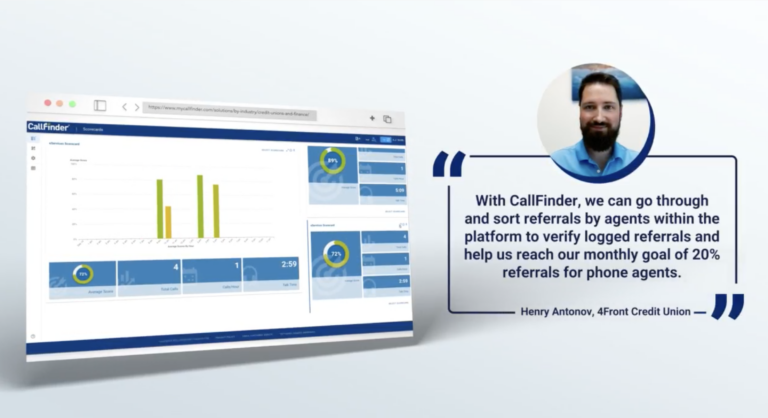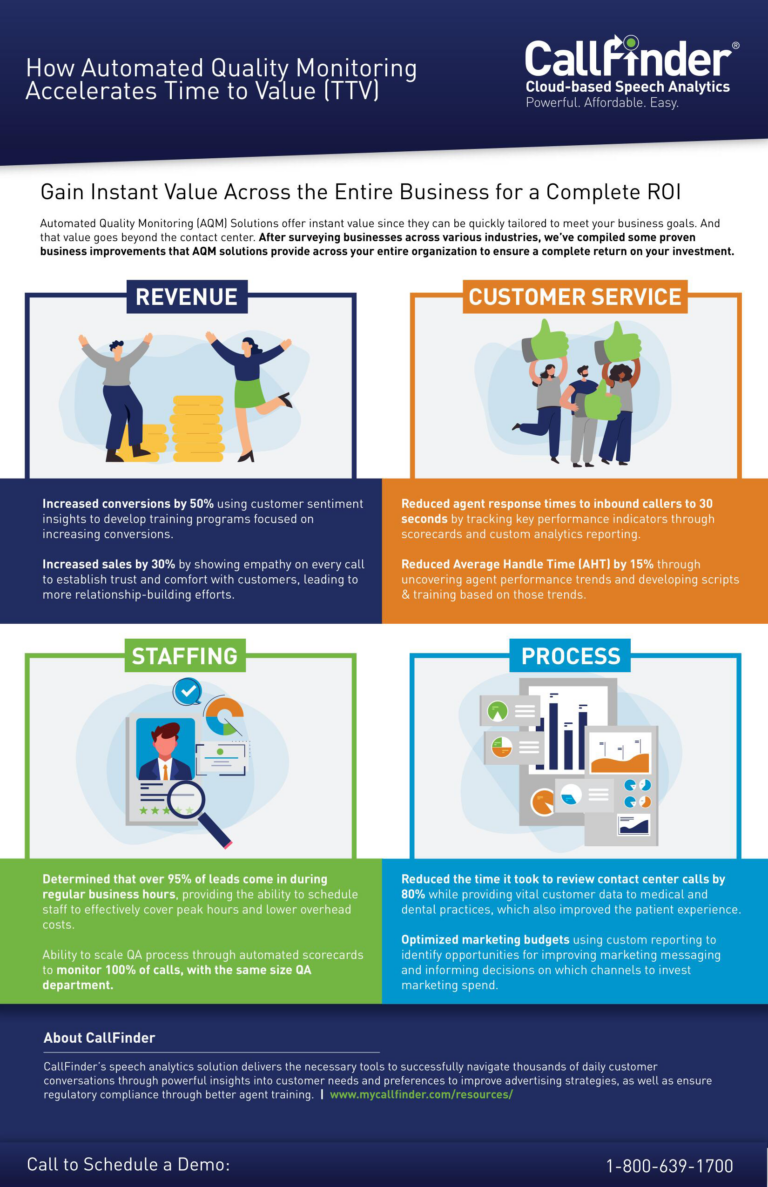Traditional Quality Assurance
The state of quality assurance today, is that QA staff, supervisors and trainers are an overextended resource. They’re performing QA tasks and monitoring manually, maybe scoring agents’ calls from random samples. Or, they’re doing “targeted” QA which traditionally means slogging through lots and lots of calls, hoping to stumble across something worthy of attention, something coach and training-worthy.
These methods are time-intensive, resource intensive, and really limited. it’s nearly impossible to devote enough resources to monitor and document the important information from all the calls really necessary to really do robust QA. We might invest in tools like call recording, but-if we only have the personnel and time resources to listen to a tiny portion of calls, we’re not really getting the most out of that investment.
These time and resource limitations mean we have an insufficient sample with current processes of relevant calls to see the big-picture view and really analyze trends.
QA Practices Are Changing
Today, things are changing, and the customer journey is becoming a shared vision across multiple touch points and various interactions company-wide. Quality Assurance practices are changing out of necessity– more is demanded of businesses and contact centers than ever before to deliver an optimal customer experience, to differentiate, to stay relevant and to remain competitive.
And the contact center holds a key front-line role in driving customer experience. It’s uniquely positioned to inform and support across departments on larger-picture Voice of Customer (VoC), business intelligence, and operational issues.
We know, for example, for every bad customer interaction it takes another 12 positive experiences to make up for that! These are some of the issues that we’re facing. But traditional QA methodology needs to change to address these issues. This is why speech analytics (SA), also called audio mining, is becoming more and more prevalent. SA is the only way you can listen to every call categorize important calls, and truly help understand the customer perspective. Because every interaction matters.
Traditional methods can’t capture and manage the intelligence contained in phone conversations. Without technology like speech analytics that extracts data from calls, you can’t see the forest for the trees.
Speech Analytics is Transforming QA
Audio mining brings QA to a whole new level. As opposed to random and manual sampling, speech analytics takes that time consuming task and helps paint the larger picture, more quickly and more efficiently. If you think about how long it takes to manually listen to an hour’s worth of calls, with stopping, rewinding, and listening again to multiple points within a call, it may very well take longer than that one hour of recorded conversation. By implementing speech analytics technology into the quality assurance process, you can scan, categorize and identify the calls that are most important to you, within seconds NOT hours. You can sort calls by whether or not they’re script compliant, by specific agent, and by a particular product or service that is being discussed on the call.
By categorizing the calls based on specific spoken phrases, you can delegate to the most appropriate person to listen to those calls, and easily flag the calls that need immediate attention for customer saves, agent performance issues, and so much more.
This makes the tasks of following up and addressing any concerns that much faster, which ultimately will help streamline the QA process, and make the contact center more efficient, contributing positively to the bottom line.
Further, this technology will allow you to aggregate and document the vital content of those calls, which is impractical and impossible with manual listening alone. And because audio mining technology gives you the unlimited ability to quickly mine and categorize your calls, now you can improve operations and the customer experience that much faster.
Speech Analytics’ Impact on the Bottom Line
Even small improvements to the quality assurance process in a company can make a big impact. We particularly like the statistic that says a10% increase in customer retention levels results in a 30% increase in the value of a company. To put it into perspective, in terms of quality assurance, what is the call center, and QA’s role in making these changes and these impacts, and how can audio mining help?
Practical Applications for Quality Assurance
An example of the impact of SA on the QA process, and ultimately the bottom line, is seen in this recent data from KPMG. In the insurance industry, the presence of a single word—the word “ridiculous” in conversations was identified as a strong indicator of customer churn—when a customer or an agent said this word, the customer was 80% more likely to change their insurer within three months.
Now imagine the speech analytics engine automatically pinpoints the calls for you that contain this language IN MINUTES. Now you have all those calls at your fingertips so you can conduct a root cause analysis and you can react quickly, in the short term, maybe develop a customer save process, train agents to handle these situations better, and in the long term, identify and fix those underlying causes.
Results with Speech Analytics
To speak to our experience, we’ve seen our clients organize and listen to their calls with SA, and then act on the insights to get documented results. They’ve increased sales conversion rates 59%; achieved 100% compliance with regulations like TCPA; In a more immediate sense, reduce man hours/QA assurance monitoring and analysis hours by 90%.
Impact of Insufficient Quality Assurance Monitoring
It is estimated that businesses and contact centers that lack speech analytics/audio mining technology fail to capture and understand 90% of customer communications, leaving an enormous gap in business knowledge.
Understanding how critical the customer experience is as a key differentiator for business, it is easy to understand then why one of the biggest growing trends and investments today is in speech analytics. This technology, increasingly, is being regarded as a MUST have quality assurance tool, instead of a NICE-TO-HAVE tool.
Speech Analytics As QA Best Practice
We recently discussed this as part of a roundtable panel of contact center technology experts. Get the full presentation here.






